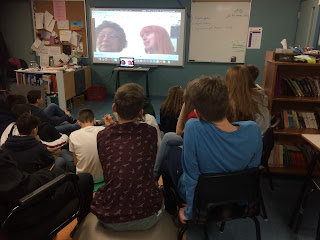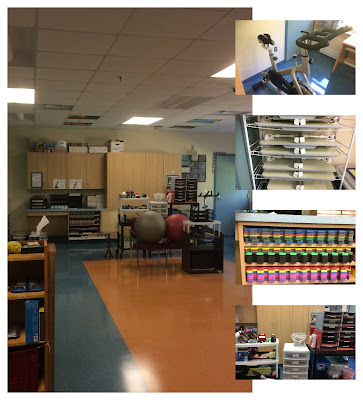Here is the body of an email I sent to my grade 8 teaching partners and my principal in regards to this question.
I had a long chat with my grade 8s on Friday about choosing appropriate games to play on school computers. I asked for the titles of some of the games they are playing currently, so that I could check them out. They all agreed that there are definitely some games that are more inappropriate for school than others. That being said, most video games have some element of confrontation inherent in the genre. If you think of games in the past like Pacman or Mario, video games are often about "killing" in some way.
The three titles that we talked about specifically on Friday were Krunker (what is called a "first person shooter"), Rooftop Sniper, and Tank Trouble (both of which are 2D games). The first is a definite NO, in my opinion (and in the opinion of my students) It is 3D, graphic, semi-realistic, and involves stalking other players in order to shoot them. The others, while they do involve shooting, are not at all realistic. Rooftop Sniper involves repeatedly pressing one or two buttons in order to force your opponent off a roof, while Tank Trouble is about aiming where your shot ricochets in order to hit your opponent within a 2D maze.
I worry that if we try to police any game where there is some element of confrontation, we would be better to simply ban the use of school computers for games of any sort (which is not something I recommend). My students were very quick to admit that Krunker was not the right choice for an in-school game, but were honestly not clear as to why the others caused a problem (and I tend to agree with them). I don't think we can legitimately claim that a game like Tank Trouble is in the same category as Fortnite or Krunker. Thinking about cultural responsiveness, and as a player of video games myself, I think it is important that we validate and affirm students' interests in gaming, and then build and bridge to help them make appropriate choices in school. Obviously, if the games they are playing are causing serious real-world conflicts between students, those games would be better not played in school, regardless of their themes.
I've asked my students to hold off on playing games that they have already been asked to avoid, or that they know others have been asked to avoid, until such time as the grade 8 teachers can chat about this. I also let them know that if they think a game might be inappropriate, the better choice would be not to play it at school. Additionally, we talked about the fact that it becomes more of a discipline issue if they have already been asked to stop playing a game but choose to continue playing anyway.
I'd love to have a chance to chat about this with you all; I think we have an opportunity to do some teaching around digital citizenship, and appropriate decision-making, rather than clamping down on video games altogether.






































